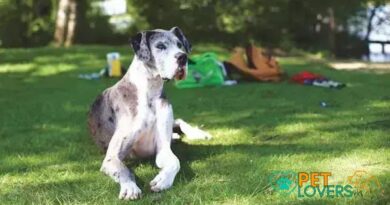What is Scent training
Understanding Scent Training
Scent training, often referred to as scent work, is a specialized form of training that focuses on enhancing a dog’s natural ability to detect and identify various scents. This training is not only beneficial for working dogs, such as search and rescue or detection dogs, but it can also be a fun and engaging activity for pet dogs. By utilizing their keen sense of smell, dogs can be taught to locate specific scents, which can be a rewarding experience for both the dog and the handler.
The Importance of Scent in Dog Training
Dogs possess an extraordinary sense of smell, estimated to be between 10,000 to 100,000 times more sensitive than that of humans. This remarkable olfactory capability makes them ideal candidates for scent training. Understanding how to harness this natural instinct can lead to successful training outcomes. Scent training not only stimulates a dog’s mind but also provides physical exercise, making it a holistic approach to canine well-being.
Types of Scent Training
There are various types of scent training, each tailored to different purposes. Some common forms include tracking, where dogs follow a scent trail; detection, where they identify specific odors, such as drugs or explosives; and search and rescue, where they locate missing persons. Each type of training requires different techniques and approaches, allowing handlers to choose the best fit for their dog’s abilities and the intended outcome.
Basic Techniques for Scent Training
To begin scent training, handlers can start with simple exercises that encourage their dogs to use their noses. One effective technique is the “hide and seek” game, where treats or toys are hidden, and the dog is encouraged to find them using their sense of smell. Gradually increasing the difficulty of these exercises helps to build the dog’s confidence and skills. Consistency and positive reinforcement are key components in successfully teaching a dog to scent train.
Tools and Equipment for Scent Training
While scent training can be done with minimal equipment, certain tools can enhance the experience. Scented oils, specific training scents, and scent containers can help in creating a more structured training environment. Additionally, using a long line or harness can provide safety and control during outdoor training sessions. The right tools can make a significant difference in the effectiveness of the training process.
Benefits of Scent Training for Dogs
Scent training offers numerous benefits for dogs, including mental stimulation, improved focus, and increased confidence. Engaging in scent work can help alleviate behavioral issues stemming from boredom or excess energy. Furthermore, it strengthens the bond between the dog and handler, as they work together to achieve common goals. The satisfaction of successfully completing scent tasks can lead to a happier and more well-adjusted dog.
Common Challenges in Scent Training
While scent training can be rewarding, it also comes with its challenges. Some dogs may become distracted or lose focus, especially in busy environments. Handlers must be patient and willing to adapt their training methods to suit their dog’s individual needs. Consistent practice and gradual exposure to various environments can help overcome these challenges, ensuring a positive training experience.
How to Get Started with Scent Training
Getting started with scent training requires a few basic steps. First, choose a specific scent to work with, such as a favorite toy or a particular food item. Begin in a controlled environment, gradually introducing distractions as the dog becomes more proficient. Enrolling in a scent training class or working with a professional trainer can also provide valuable guidance and support, helping to ensure a successful training journey.
Advanced Scent Training Techniques
Once a dog has mastered the basics of scent training, handlers can introduce more advanced techniques. This may include teaching the dog to differentiate between multiple scents, increasing the complexity of scent trails, or incorporating scent work into real-life scenarios. Advanced training not only challenges the dog but also keeps the training sessions exciting and engaging, further enhancing the dog’s skills and abilities.




